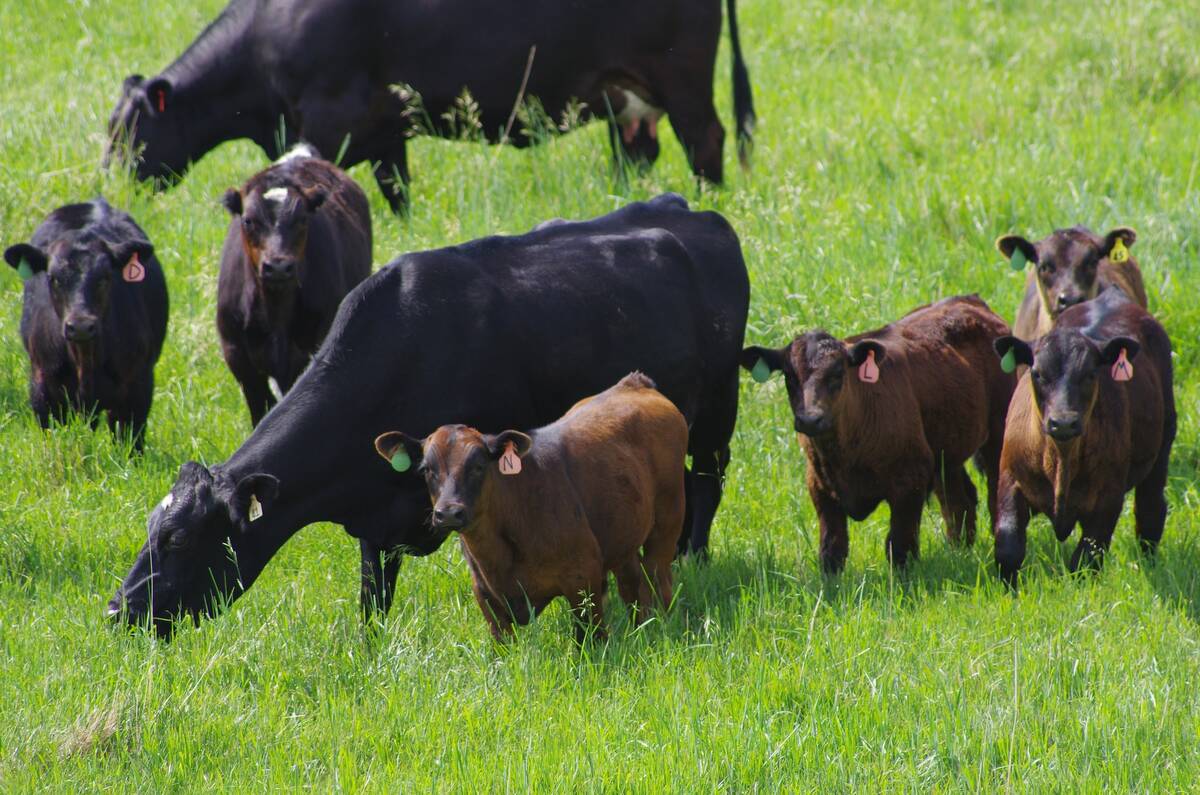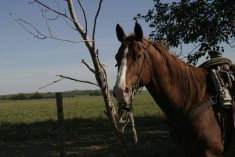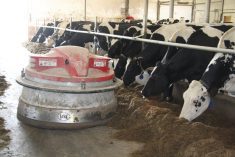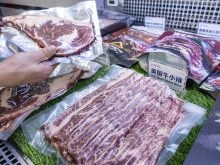PRINCE GEORGE, B.C. – Bumps, bruises and other defects detected in beef carcasses are costing the industry up to $114 million a year.
The results of Canada’s first beef quality audit were released June 1 at the British Columbia Cattlemen’s Association convention here.
These defects dock a carcass’s value by an average $70 each, said Joyce Van Donkersgoed, an Alberta provincial veterinarian who participated in the audit.
Besides listing the problems, the audit offers suggestions for areas of improvement like better genetic selection of cattle, improved handling practices and diligent record keeping from production to processing.
Read Also

Manitoba extends Crown land rent freeze
Manitoba government links the continued rental rate freeze on grazing and forage leases to economic and environmental challenges facing the industry
“Only when you know what we produce can you make changes,” said Van Donkersgoed.
More bruising
Measured against the Americans, Canada had fewer brands and fewer dark cutters. However Canadian cattle had more horns, more bruising and more liver condemnations. Cattle weighed in at the same size but Canadian cattle carry less fat.
Four packing plants in Canada participated in the audit. Conducted last August, November and March to track seasonal differences, the studies took place on the slaughter floor and in the coolers. Fed heif-ers and steers as well as cull cows, bulls and dairy animals were evaluated. Dairy animals were included because they tend to end up as hamburger.
Participating com-panies were Lakeside Packers at Brooks, Cargill at High River, XL Foods in Calgary and Better Beef in Ontario. These plants handle about 80 percent of Canada’s beef.
Packers told auditors they are concerned about the presence of tag (mud and manure on hides), injection site injuries, bruising, brands, dark cutters, stags, liver abscesses, tongue erosions, variable carcass size and condemned heads.
Retailers complain of inconsistent product quality, too much fat, inconsistent meat color, price, lack of tenderness, weight and poor conformation.
Preliminary results of the audit are as follows.
- Tag – Auditors measured the amount of mud or manure and whether it was wet or dry. Of the carcasses assessed, 34 percent were carrying tag with the highest amount noted during the March audit. Not only does this create possible disease by leaving dirt on a skinned carcass, it adds to labor costs in plants where extra time must be added to clean the hides.
- Brands – Frequency and location were noted on the 37 percent of animals with brands. Six percent had multiple brands. Of those branded, 47 percent were on the hip and another 43 percent were found on the rib area, causing considerable damage to a hide and devaluing it for the leather industry. More brands appeared in Western Canada than Eastern Canada.
- Grubs – Only .01 percent of carcasses showed insect damage, however Van Don-kersgoed said the incidence of grubs may be underestimated.
- Injection site injuries – Injuries caused by poor handling restraints, irritating medicines, off-label use of drugs or dull needles still occur on prime cuts on the top hip or butt end. These blemishes cause $9.79 loss per carcass. If noticed, the damaged tissue is cut away as waste. Because auditors believe they didn’t get a true measure of the extent of these injuries, further study at the retail level will be conducted. This first audit showed injuries on 1.3 percent of hanging carcasses.
- Horns – About 40 percent of the animals checked had horns. Van Donkersgoed said the size and length of horns don’t matter because they still bruise other animals. They must also be removed before a hide is pulled off. If a large wound occurs, hair or dirt can get in the cavity and result in a condemned head.
- Bruising – The audit showed 22 percent of all animals did not have bruises but 12 percent had four or more. Cows were the most bruised. Bruises can happen from rough handling, poorly designed loading facilities or trucks, slippery floors or crowding. A critical amount of bruising is assessed when more than 3.2 lbs. of meat must be trimmed away. Minor bruising means about half a pound of trim. Bruises cause losses of $10.6 million to the industry.
- Livers – Abscesses and other forms of contamination were noted. High concentrate diets can cause abscesses on livers. No abscesses were detected on 78 percent of livers examined. However, other problems with livers due to health conditions resulted in condemnations for a total loss of $14.2 million.
- Head condemnations – Heads are worth about $20 and if damaged are considered a loss.
- Tongue condemnations can occur when rough feed has eroded them. Losses add up to about $2.4 million.
- Number of fetuses bled – Pregnancy was noted in 6.7 percent of the female cattle. Fetuses are bled and the blood is sold for serum. No loss figures were available.
Cooler checks
The cooler audit measured ribeye size, marbling scores, yellow fat and percentage of lean meat yield.
Considerable variability in size of carcass was noted in the cooler checks. Retailers don’t want carcasses beyond the 600 to 800 pound range. About half an inch of fat was measured on a number of carcasses, which is considered an expensive waste since packers trim them down to a quarter-inch fat cover. The average lean meat yield was 59 percent with no seasonal difference noted.
Retailers say they want 60 percent of carcasses to grade AAA which carries the highest level of marbling in the Canadian system. Overall, 27 percent graded triple A.
Dark cutters amounted to 1.6 percent of carcasses examined. This is caused by stress, fasting before slaughter, fluctuating weather, genetics and overuse of hormone implants. The incidence of dark-colored meat seemed more prevalent in August. While the meat doesn’t seem to taste any different, consumers prefer cherry red meat over dark red meat. Dark cutters usually end up as hamburger.















